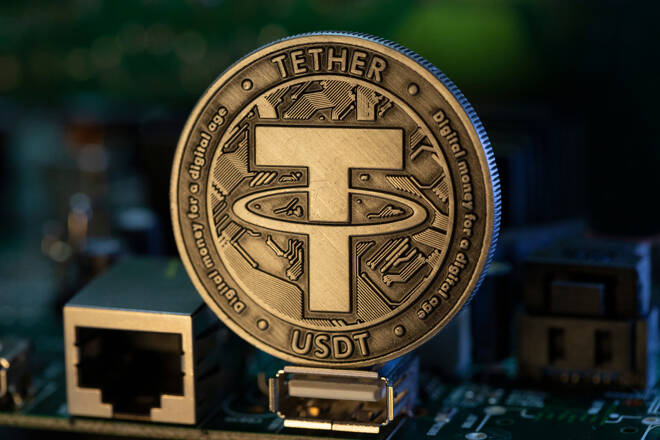Advertisement
Advertisement
UK Regulators Target Stablecoins Following Terra Collapse
By:
Financial regulators in the United Kingdom have set their sights on stablecoins following the catastrophic collapse of the Terra ecosystem earlier this month.
Key Insights:
- The FCA has accelerated plans to roll out a regulatory framework for stablecoins.
- U.S. regulators are seeking more details on the Terra stablecoin structure.
- Total stablecoin supply has declined 12% as investors cash out of crypto.
The U.K.’s Financial Conduct Authority (FCA) is working with the Treasury on a new regulatory framework for crypto and stablecoins. The accelerated push for new rules comes in the wake of the collapse of the world’s third-largest stablecoin UST on May 9.
Sarah Pritchard, executive director for markets at the FCA, said that the recent market instability in stablecoins “will absolutely need to be taken into account” when developing new regulations, according to Bloomberg.
The UK has recently taken an increasingly harsher stance towards the crypto industry with registration requirements that have forced several companies to relocate to friendlier jurisdictions overseas.
Stablecoin Scrutiny
Pritchard, who oversees the FCA’s work on crypto, said this week that “innovation lasts if it works well, and clearly, we’ve seen the consequences and some of the issues that can arise.” The regulator claims that nearly 70% of adults who bought crypto incorrectly assumed they were regulated.
In a similar stance to regulators in the United States, those in Britain cite investor protection as one reason to regulate.
“In the last week where we saw significant price movements, it brings that into the fore, and it shows the importance of making sure that people understand that that is a risk of where they put their money.”
Currently, the FCA has been primarily concerned with money laundering issues that it claims are associated with digital assets. The financial watchdog will gain new powers from the Treasury to handle crypto asset regulation later this year.
The meltdown of the Terra stablecoin and its LUNA token has given global policymakers more ammunition in their battle to control the crypto industry and restrict the use of digital assets.
Across the pond in the U.S., Capitol Hill lawmakers have been getting flustered over the Terra fiasco bombarding organizations such as the Blockchain Association and the Chamber of Digital Commerce with questions on the structure of the stablecoin network.
Lobbyists are urging lawmakers not to crack down too hard on stablecoins as they are not all created equally. There is a distinct lack of education on crypto and its underlying mechanisms among U.S. politicians, leading to them considering introducing sweeping restrictions and stifling the nascent digital asset industry.
Stablecoin Ecosystem Outlook
Stablecoins currently make up around 12% of the total crypto market capitalization, with $162 billion between them. This figure has depleted about 17% from its peak, mainly due to the collapse of the $18 billion UST network, which is now worth a mere $630 million.
The world’s largest stablecoin, Tether, has also seen its supply shrink. The circulating supply of USDT is currently $73 billion, down 12% from $83 billion, mainly due to redemptions and investors cashing out of crypto. Circle’s USDC now has a market cap of around $53 billion which is not far off its all-time high.
About the Author
Martin Youngauthor
Martin has been covering the latest developments in the blockchain and digital asset industry since 2017 when he made his first investment. He has previous trading experience and has worked extensively in IT over the past 2 decades.
Did you find this article useful?
Latest news and analysis
Advertisement
